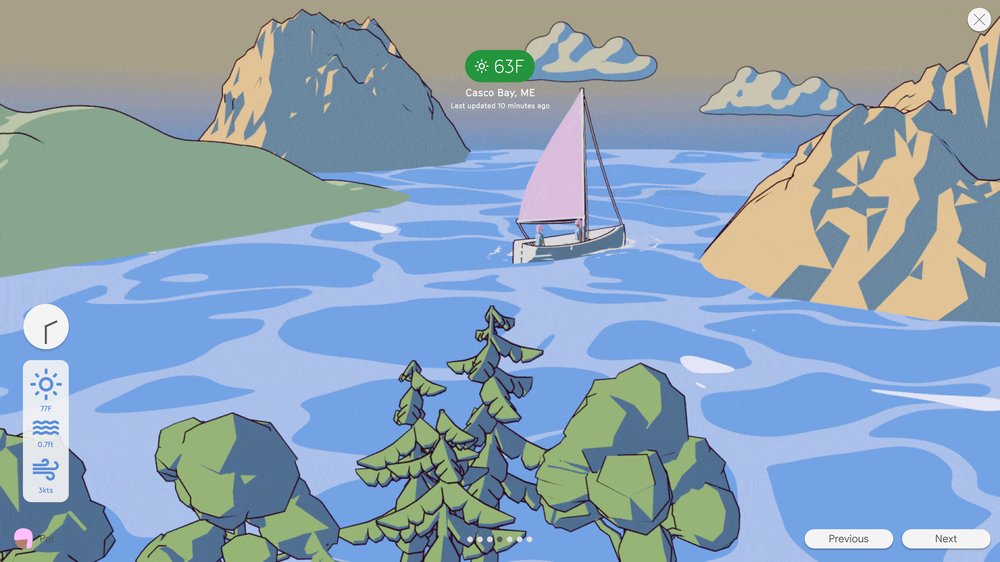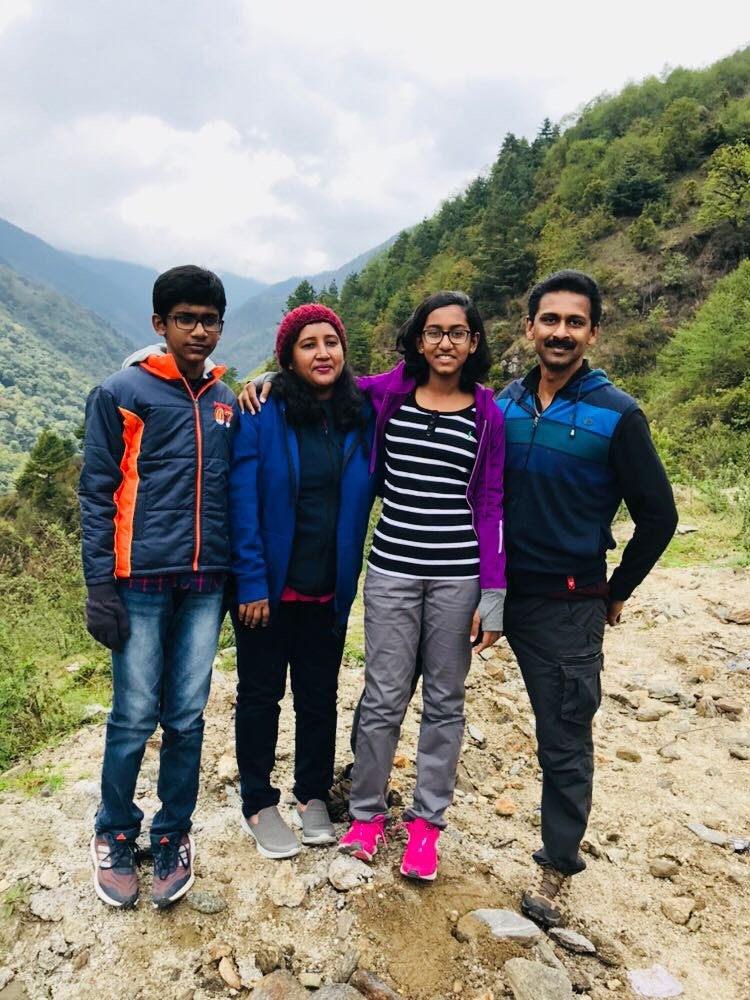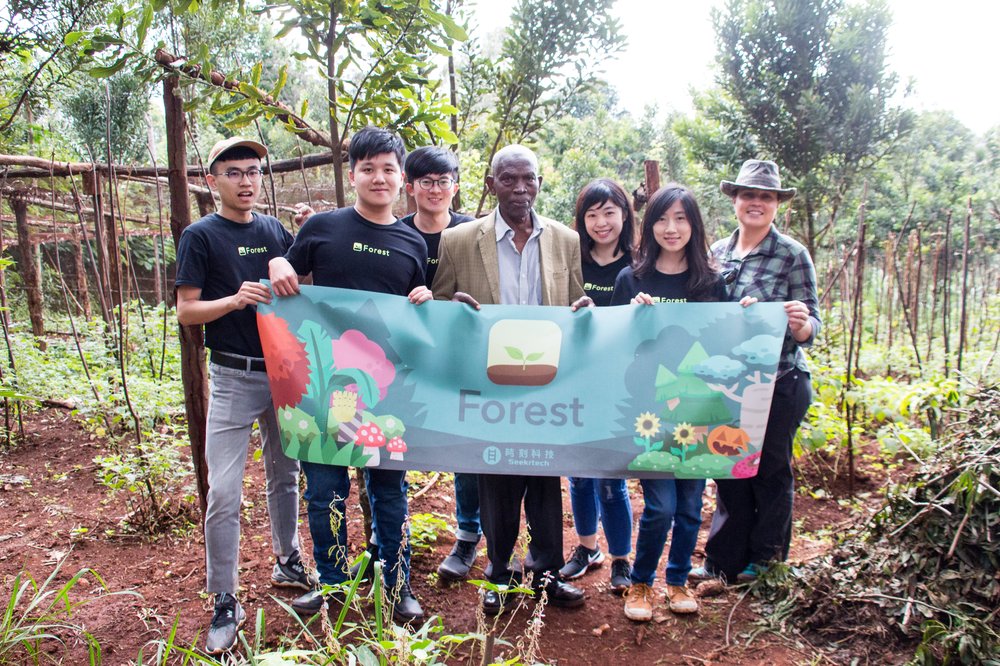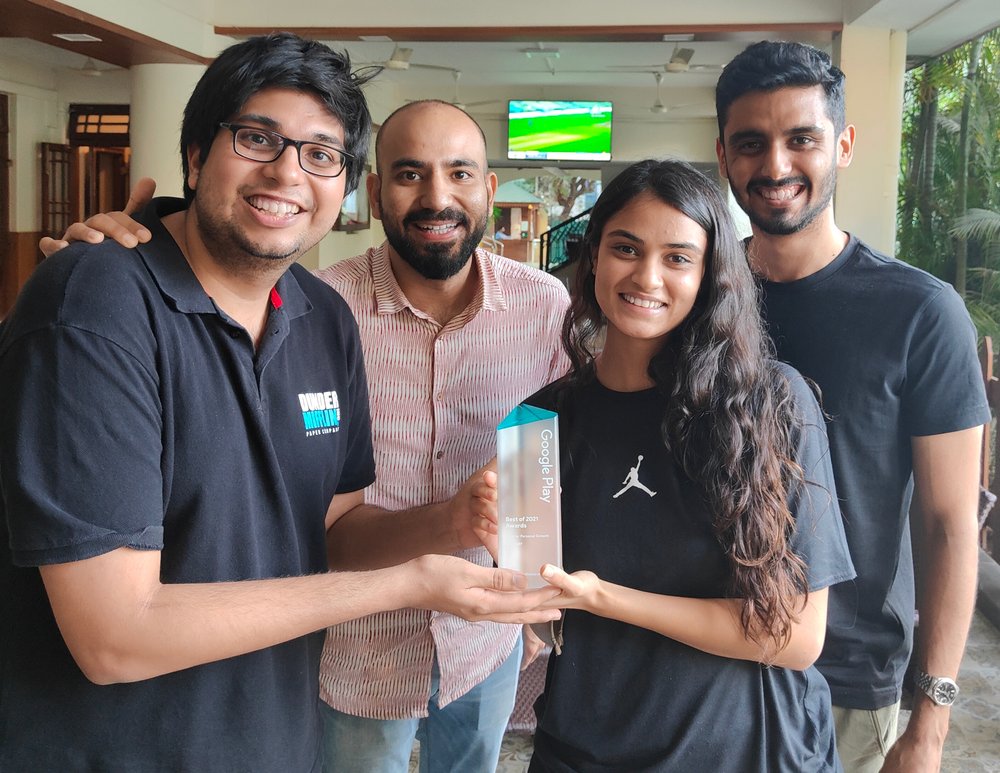What creators should know about Google’s helpful content update
Source: Google Search Central Blog
Building language models, one story at a time
One-third of the world's languages are spoken in Africa, but less than 1% of African languages are represented online. This is significant because the language you speak, write or sign shapes your online experience. Language is the cornerstone of your identity, the connection to your past and the key to your future. When we can’t experience the internet in our language, it limits what we can learn, what jobs we can have, what stories we can access, and so much more.
In my home country Mali, eighty percent of the population speaks Bambara as its first or second language. It is also spoken in Burkina Faso, Ivory Coast, Liberia and Guinea — making it one of West Africa's most widely spoken languages. But, if Bambara is your primary language, it can be difficult to have an immersive internet experience. That's why I've set out to make the internet more accessible to Bambara speakers, remove the language barrier, and bring this primarily spoken language online for everyone.
To achieve this goal, a language model for Bambara needs to be built. Language models require lots of data, which typically means having hours of transcribed recordings where humans are speaking the language so that computers can learn the language through a process called Natural Language Processing. Unfortunately, Bambara lacks readily available data to train. Researchers call this being “low-resourced.” My team at Robots Mali has been trying to solve this challenge for years as part of a collaborative project called Bayɛlɛmabaga. Through collaboration with the Google Research team in Accra, we're closer to accomplishing our goals of building more resources (written and bilingual texts) for Bambara.
To overcome the challenge of being “low-resourced," we teamed up with those who hold the culture's knowledge, rich history and teachings. Malian Griots are the real keepers of the Bambara collective memory, passing their knowledge only through oral storytelling. So, we gathered more than thirty griots to record them narrating generational stories. We transcribed and translated each tale to preserve the knowledge for future generations. While griots are traditionally older men, for this project, we worked to identify a diverse group of griots based on age, gender and background to build a representative group.
Using these recordings we've been able to build a model for understanding Bambara speech and facilitating easy translation to other languages, known as an Automatic Speech Recognition (ASR) model. As a result, we are making the world's information more accessible to millions of Bambara speakers and releasing our findings for the research community and everyone to benefit. Our work has allowed us to uplift traditional practices while building a new future for Bambara speakers. We’re in contact with the National Museum of Mali to donate all of the beautiful stories that the griots have narrated. The rich history and teachings from the griots will be available to the local community and public. Furthermore, the project is selected to be showcased at The Deep Learning Indaba 2022 next week, the largest machine learning conference in Africa.
Most importantly, we identified oral literature as a viable resource for languages. Many languages are underrepresented online, and this project represents a big step towards bringing more of them online. Of course, there's still a lot of work to do. But, by introducing this work to the community, researchers have new tools to keep breaking down the online language barrier.
Source: The Official Google Blog
More content by people, for people in Search
Many of us have experienced the frustration of visiting a web page that seems like it has what we’re looking for, but doesn’t live up to our expectations. The content might not have the insights you want, or it may not even seem like it was created for, or even by, a person.
We work hard to make sure the pages we show on Search are as helpful and relevant as possible. To do this, we constantly refine our systems: Last year, we launched thousands of updates to Search based on hundreds of thousands of quality tests, including evaluations where we gather feedback from human reviewers.
We know people don’t find content helpful if it seems like it was designed to attract clicks rather than inform readers. So starting next week for English users globally, we’re rolling out a series of improvements to Search to make it easier for people to find helpful content made by, and for, people. This ranking work joins a similar effort related to ranking better quality product review content over the past year, which will also receive an update. Together, these launches are part of a broader, ongoing effort to reduce low-quality content and make it easier to find content that feels authentic and useful in Search.
Better ranking of original, quality content
We continually update Search to make sure we're helping you find high quality content. Next week, we'll launch the “helpful content update” to tackle content that seems to have been primarily created for ranking well in search engines rather than to help or inform people. This ranking update will help make sure that unoriginal, low quality content doesn’t rank highly in Search, and our testing has found it will especially improve results related to online education, as well as arts and entertainment, shopping and tech-related content.
For example, if you search for information about a new movie, you might have previously seen articles that aggregated reviews from other sites without adding perspectives beyond what’s available elsewhere. This isn’t very helpful if you’re expecting to read something new. With this update, you’ll see more results with unique, authentic information, so you’re more likely to read something you haven't seen before.
As always, we'll continue to refine our systems and build on this improvement over time. If you’re a content creator, you can learn more about today’s update and guidance to consider on Search Central.
More helpful product reviews written by experts
We know product reviews can play an important role in helping you make a decision on something to buy. Last year, we kicked off a series of updates to show more helpful, in-depth reviews based on first-hand expertise in search results.
We've continued to refine these systems, and in the coming weeks, we’ll roll out another update to make it even easier to find high-quality, original reviews. We’ll continue this work to make sure you find the most useful information when you’re researching a purchase on the web.
We hope these updates will help you access more helpful information and valuable perspectives on Search. We look forward to building on this work to make it even easier to find original content by and for real people in the months ahead.
Source: The Official Google Blog
Helping people understand AI
If you’re like me, you may have noticed that AI has become a part of daily life. I wake up each morning and ask my smart assistant about the weather. I recently applied for a new credit card and the credit limit was likely determined by a machine learning model. And while typing the previous sentence, I got a word choice suggestion that “probably” might flow better than “likely,” a suggestion powered by AI.
As a member of Google’s Responsible Innovation team, I think a lot about how AI works and how to develop it responsibly. Recently, I spoke with Patrick Gage Kelley, Head of Research Strategy on Google’s Trust & Safety team, to learn more about developing products that help people recognize and understand AI in their daily lives.
How do you help people navigate a world with so much AI?
My goal is to ensure that people, at a basic level, know how AI works and how it impacts their lives. AI systems can be really complicated, but the goal of explaining AI isn’t to get everyone to become programmers and understand all of the technical details — it’s to make sure people understand the parts that matter to them.
When AI makes a decision that affects people (whether it’s recommending a video or qualifying for a loan), we want to explain how that decision was made. And we don’t want to just provide a complicated technical explanation, but rather, information that is meaningful, helpful, and equips people to act if needed.
We also want to find the best times to explain AI. Our goal is to help people develop AI literacy early, including in primary and secondary education. And when people use products that rely on AI (everything from online services to medical devices), we want to include a lot of chances for people to learn about the role AI plays, as well as its benefits and limitations. For example, if people are told early on what kinds of mistakes AI-powered products are likely to make, then they are better prepared to understand and remedy situations that might arise.
Do I need to be a mathematician or programmer to have a meaningful understanding of AI?
No! A good metaphor here is financial literacy. While we may not need to know every detail of what goes into interest rate hikes or the intricacies of financial markets, it’s important to know how they impact us — from paying off credit cards, to buying a home, or paying for student loans. In the same way, AI explainability isn’t about understanding every technical aspect of a machine learning algorithm – it’s about knowing how to interact with it and how it impacts our daily lives.
How should AI practitioners — developers, designers, researchers, students, and others — think about AI explainability?
Lots of practitioners are doing important work on explainability. Some focus on interpretability, making it easier to identify specific factors that influence a decision. Others focus on providing “in-the-moment explanations” right when AI makes a decision. These can be helpful, especially when carefully designed. However, AI systems are often so complex that we can’t rely on in-the-moment explanations entirely. It’s just too much information to pack into a single moment. Instead, AI education and literacy should be incorporated into the entire user journey and built continuously throughout a person’s life.
More generally, AI practitioners should think about AI explainability as fundamental to the design and development of the entire product experience. At Google, we use our AI Principles to guide responsible technology development. In accordance with AI Principle #4: “Be accountable to people,” we encourage AI practitioners to think about all the moments and ways they can help people understand how AI operates and makes decisions.
How are you and your collaborators working to improve explanations of AI?
We develop resources that help AI practitioners learn creative ways to incorporate AI explainability in product design. For example, in the PAIR Guidebook we launched a series of ethical case studies to help AI practitioners think through tricky issues and hone their skills for explaining AI. We also do fundamental research like this paper to learn more about how people perceive AI as a decision-maker, and what values they would like AI-powered products to embody.
We’ve learned that many AI practitioners want concrete examples of good explanations of AI that they can build on, so we’re currently developing a story-driven visual design toolkit for explanations of a fictional AI app. The toolkit will be publicly available, so teams in startups and tech companies everywhere can prioritize explainability in their work.

The visual design toolkit provides story-driven examples of good explanations of AI.
I want to learn more about AI explainability. Where should I start?
This February, we released an Applied Digital Skills lesson, “Discover AI in Daily Life.” It’s a great place to start for anyone who wants to learn more about how we interact with AI everyday.
We also hope to speak about AI explainability at the upcoming South by Southwest Conference. Our proposed session would dive deeper into these topics, including our visual design toolkit for product designers. If you’re interested in learning more about AI explainability and our work, you can vote for our proposal through the SXSW PanelPicker® here.
Source: The Official Google Blog
How a career in cloud technology led Johnson to Google
Welcome to the latest edition of “My Path to Google,” where we talk to Googlers, interns, apprentices and alumni about how they got to Google, what their roles are like and even some tips on how to prepare for interviews.
Today’s post is all about Johnson Jose, a Google Cloud leader based in Bangalore, India with a passion for shaping the future of cloud technology.
What’s your role at Google?
I lead the Application Engineering team in Google Cloud India, which builds tools and platforms to help onboard our partners. I spend most of my time in technical discussions, but I also meet with both internal and external partners to stay plugged into what’s happening in the cloud industry.
Can you tell us a bit about yourself?
I grew up in Kerala, India and received a masters degree in engineering, followed by my MBA. I’ve also written two books, one about data quality excellence and the other about cloud development operations. I’m currently writing my third book about business management — stay tuned. When I’m not working, I love to hike and try new dishes.

Johnson hiking with his family.
How would you describe your path to your current role at Google?
I started my career working in cloud transformation at a few different companies, where I learned about local area networks, routing and switching technologies. I had always wanted to work at Google and I actually got the chance to work with Google Cloud as one of my clients. So when a Google recruiter approached me, I took the opportunity.
What inspires you to come in (or log in) every day?
I’m very passionate about cloud technology, and I enjoy knowing my work is shaping cloud infrastructure today and in the future. We’re influencing the future of the internet, simplifying and improving how quickly people can connect and work. Of course, I’m also inspired by my team and our amazing workplace. We have great food and a world-class gym.
What have you learned about leadership since joining Google?
Leadership at Google is rooted in inclusivity and respect. I remember when I joined, my own management team, who’s based all around the world, rearranged the entire meeting schedule to accommodate my time zone. And there’s a strong focus on the wellbeing of our teams. I’ve also learned you don’t need to be a senior leader to lead at Google. Everyone can teach and make an impact.

Johnson visiting a Google campus in California.
How did the application and interview process go for you?
I remember being impressed with how well my recruiter explained the interview process. From start to finish, the entire experience was professional, respectful and transparent. I actually interviewed right in the middle of the pandemic and needed some flexibility to help my previous company navigate through that time. Google was very respectful of that.
Do you have any tips you’d like to share with aspiring Googlers?
First, preparation is key. Take advantage of the many resources and videos available online, including on the Google Careers site. For the interview, focus on your strengths and be confident about your work. Remember to also be curious and ask for clarification so it’s a discussion rather than a one-sided process. If you’re interviewing for the Google Application Engineering team specifically, showcase your domain expertise and experience in writing well-structured programs. Google wants to hire you for you - don’t be afraid of the interview and focus on enjoying it!
Source: The Official Google Blog
Chrome Dev for Android Update
Hi everyone! We've just released Chrome Dev 106 (106.0.5243.2) for Android. It's now available on Google Play.
You can see a partial list of the changes in the Git log. For details on new features, check out the Chromium blog, and for details on web platform updates, check here.
If you find a new issue, please let us know by filing a bug.
Erhu Eakpobaro
Google Chrome
Source: Google Chrome Releases
More connected TV ad buying options in Display & Video 360
As viewers continue to shift from traditional TV to connected TV (CTV), marketers are looking for effective ways to connect with streamers and measure the reach of their campaign across a variety of CTV apps. So we’re introducing new CTV solutions in Display & Video 360 to give you the option to pick the inventory and measurement solutions that work best for you.
First we’re adding audience guarantees based on Nielsen Digital Ad Ratings (DAR) to Display & Video 360 and expanding advanced Programmatic Guaranteed features to more exchanges. Programmatic Guaranteed lets you access top CTV ad placements, combining the best of the direct deal buying experience with the automation and personalization of programmatic. Leading brands like Uber already use this buying technique to secure coveted CTV inventory around high-visibility events while still enjoying the efficiency of programmatic advertising.
Second, we’re making it simpler to buy YouTube CTV and other CTV apps in a consolidated workflow. This will give you a chance to improve your media performance by managing your campaign goals seamlessly across any CTV inventory.
Audience guarantees backed by Nielsen
CTV and video buyers often use Nielsen Digital Ad Ratings as the system of record to understand how many unique viewers they reached within their core audiences and prove campaign impact across digital media platforms. That’s why we’re launching Nielsen audience guarantees across streaming TV and video in Display & Video 360. This will make it easier to plan, buy and measure an entire connected TV upfront in Display & Video 360 in a way that’s comparable to linear TV. Being able to reach your key audiences has been central to effective traditional TV advertising — the same goes for CTV.
When setting up your guaranteed deal, you can now choose a specific age and gender demographic, like adults ages 18 to 49, and pay only for the ad impressions that reach your target audience as measured by Nielsen DAR. This feature works for all types of video campaigns — including for connected TV ads — and comes at no additional cost for advertisers.
Nielsen-based audience guarantees enable Display & Video 360 users to buy inventory programmatically and pay only for impressions that reached their target audience as reported in Digital Ad Ratings.
For now, audience guarantees are available for Programmatic Guaranteed ads running with a set of publishers on Google Ad Manager in the U.S. We look forward to onboarding more publishers and exchanges.
Advanced Programmatic Guaranteed features available for more exchanges
Speaking of expansion, we’re making Google audiences for Programmatic Guaranteed available across a variety of exchanges including Google Ad Manager but also Xandr and Magnite and looking to add more. We've already expanded capabilities for you to reach Google audiences on CTV campaigns when bidding on open auction inventory. Google audiences can help drive a higher return on investment by reaching the groups of consumers who are most likely to respond to your message based on Google’s understanding of intent. Now, you can also use Google affinity, in-market and demo segments while buying Programmatic Guaranteed deals across a variety of participating publishers, giving you even more flexibility in your audience strategies for CTV.
For these exchanges, we’re also improving how ad frequency management works for Programmatic Guaranteed deals, helping to enhance the viewing experience for your audiences. Once your campaign frequency goal is reached for certain users, whether via open auction, Programmatic Guaranteed, or a combination of the two, Display & Video 360 now stops showing ads to these users while still prioritizing and delivering the agreed number of impressions from your guaranteed deals.
We're doubling down on programmatic reservation, particularly in the growing CTV landscape. So managing frequency for Programmatic Guaranteed deals with more exchanges is critical to help us further reduce waste associated with ad overexposure.
Consolidated CTV workflow across YouTube and other CTV apps
For many marketers, simplifying campaign execution for a variety of CTV apps is fundamental to effectively reaching streamers. And Display & Video 360’s capacity to plan, manage ad frequency and measure performance across YouTube and other CTV inventory sources saves them time and money. To help CTV buyers deliver more coordinated ad campaigns, YouTube ads can now be purchased within Display & Video 360’s insertion order dedicated to connected TV ad buying. This simplified workflow features parameters designed specifically for CTV campaigns to help minimize technical blockers that typically limit reach on CTV devices. Because it puts YouTube side-by-side with other top CTV inventory, it also makes it easier to optimize for common goals or control ad frequency across your entire CTV media mix.
Test this integrated workflow and advanced Programmatic Guaranteed capabilities today and combine them with new CTV frequency management solutions in Display & Video 360 to get the most efficient reach out of your CTV deals.
Source: The Official Google Blog
Google Workspace Individual is now available in Europe
We launched Google Workspace Individual over a year ago to help solo business owners reach new customers and bring their big ideas to life. Since then, customers in the U.S., Canada, Mexico, Brazil, Japan and Australia have all used it to grow, run and protect their businesses.
They’ve used Google Meet for consultations, Calendar for scheduling and customized layouts in Gmail to easily communicate in ways that reflect their brands. We’ve loved seeing how businesses of all stripes have brought their passions to the world — from caterers, creative consultants and real estate agents to pet sitters, hair stylists and life coaches.
Now, we’re launching Google Workspace Individual in Europe. This means that customers in France, Italy, Spain, Germany, the U.K., and Switzerland can benefit from new and upcoming capabilities designed to help individual business owners stay focused on what they love, and spend less time on tasks like scheduling appointments and sending emails.
We’ve recently added powerful new capabilities to Workspace Individual, including:
- The ability to live stream from Google Meet to YouTube so customers can reach a bigger audience
- Professional layouts and multi-send for email newsletters, campaigns and announcements
- Better appointment booking with customizable reminders, durations and exceptions
- Improvements to secure video conferencing over Google Meet, with immersive backgrounds, improved sound and lighting, and the ability to bring meetings directly into the flow of work by integrating Meet with Docs, Sheets, and Slides.
And soon, customers will have the ability to add e-signatures directly to Google Docs. They’ll be able to quickly execute agreements from the familiar interface of Docs, without having to switch tabs or apps. See the full list of new and coming-soon features.
With this expansion of Google Workspace Individual, solo business owners in Europe can run, grow and protect their businesses with apps they’re already familiar with. This means more time helping customers and less time scheduling, emailing and updating calendars. In the months ahead, we’ll continue to bring Workspace Individual to an expanding list of countries.
Sign up today with a 14-day trial
Sign up for Google Workspace Individual today with a 14-day trial, or learn more about Google Workspace Individual on our website. If you’re not a business owner but still want premium capabilities for personal use, Google Workspace premium is also now available with Google One 2TB+ plans
Source: The Official Google Blog
5 apps making their mark in Asia Pacific and beyond
Google Play turned 10 this year, and we’ve been keeping the celebrations going with local developer communities around the world. It’s an extra special occasion in Asia Pacific, which is home to one of the largest app developer populations (nearly a third of the 26.9 million app developers worldwide) and one of the most engaged audiences. In fact, people in Asia Pacific download and use mobile apps more than any other region.
Developers in Asia Pacific are reaching global audiences, with hundreds of millions of downloads outside the region. Some of these apps have become global names and inspired new trends on Play, like multiplayer gaming (Mobile Legends: Bang Bang), super apps (Grab), rapid delivery e-commerce (Coupang) and fintech solutions for the unbanked (Paytm).
Let’s take a closer look at some other emerging themes on Play — like mental health, news and music — where developers in Asia Pacific are making their mark globally.
Developer: Seekrtech, Taiwan
Listed on Play: August 2014
“The main goal of Forest is to encourage users to put down their phones and focus on the more important things around them,” says Shaokan Pi, CEO of Forest. Here’s how it works — you set a focus time period, whether you’re working at the office or at dinner with friends. Once you put down your phone, a virtual tree starts growing. If you stay focused (and don’t look at your phone), the sapling grows into a big tree. And you can earn virtual coins to grow more trees, and eventually a whole forest. There’s a real-world benefit, too — thanks to a partnership between Forest and Trees for the Future, you can spend your coins to plant real trees on Earth.

The Forest team planting a tree in Kenya
Developer: SmartNews, Japan
Listed on Play: March 2013
SmartNews, which is also celebrating its 10th anniversary this year, uses artificial intelligence to collect and deliver a curated view of news from all over the world. But it’s not just an echo chamber — its News From All Sides feature shows people articles across a wide spectrum of political perspectives. SmartNews has also developed timely products like a COVID-19 dashboard and trackers for wildfires and hurricanes.
Developer: Evolve, India
Listed on Play: July 2020
Evolve, a health-tech startup supporting the wellbeing of the LGBTQ+ community, landed on Google Play’s Best of 2021 list in India. The app offers educational content for members of the LGBTQ+ community, covering topics like embracing your sexuality and coming out to loved ones. “There is a need for more customized solutions for this community,” says Anshul Kamath, co-founder of Evolve. “We hope to provide a virtual safe space where members can work on themselves and specific challenges that impact their daily mental health.”

The Evolve team with their “Best of Play” trophy in 2021
Developer: Amanotes, Vietnam
Listed on Play: February 2017
This musical game app quickly found fans in the U.S., Japan, Brazil and Russia. Magic Tiles 3 is designed to let anyone — even those without a musical background — play instruments like the piano, guitar and drums on their smartphone. You can choose from over 1,000 songs across genres like pop, rap, jazz and electronic dance music, and compete in an interactive game with others around the world.
Developer: Mom Sitter, Korea
Listed on Play: September 2021
Mom Sitter, a platform connecting parents with babysitters, topped the Play Store’s childcare category in Korea last year. But it didn’t actually start as a mobile app. It was founded as a website to help parents find babysitters while they were at work or when daycare centers were too full. After attending the ChangGoo program, Google’s training program for developers and startups in Korea, the Mom Sitter team learned they could reach more people if they went mobile. Today, caretakers all over the world use their services. “Childcare issues concern not only working women but everyone who raises children, and it’s important that they can find support,” says Jeeyea Chung, founder of Mom Sitter.